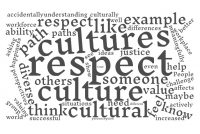How To Get a Diversity and Inclusion Program Off the Ground: A Cost-Effective Approach
As a member of the LGBTQ community, Jennifer Brown knows as well as anyone how important organizational diversity and inclusion efforts can be. That’s part of why her consulting organization focuses on training leadership and organizations on how best to implement diversity and inclusion strategies. In a recent interview with Brown, we discussed how organizations […]










